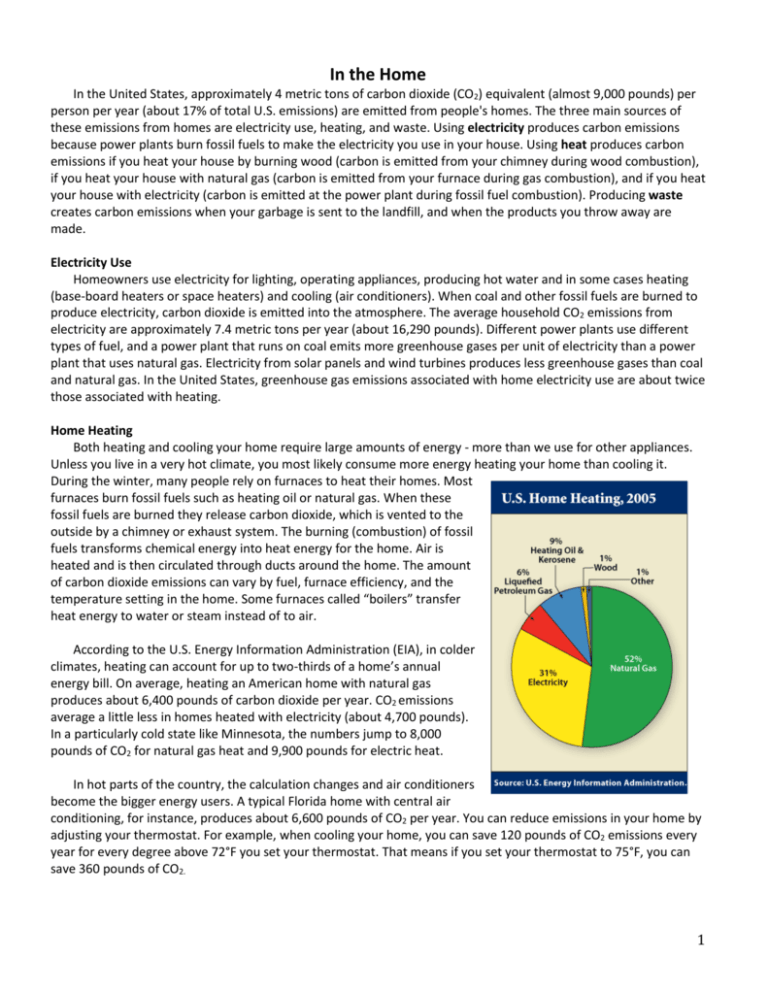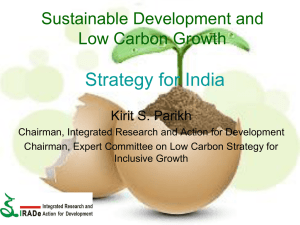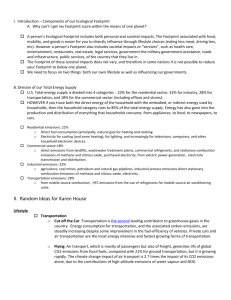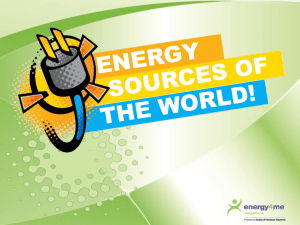Group C Buildings
advertisement

In the Home In the United States, approximately 4 metric tons of carbon dioxide (CO2) equivalent (almost 9,000 pounds) per person per year (about 17% of total U.S. emissions) are emitted from people's homes. The three main sources of these emissions from homes are electricity use, heating, and waste. Using electricity produces carbon emissions because power plants burn fossil fuels to make the electricity you use in your house. Using heat produces carbon emissions if you heat your house by burning wood (carbon is emitted from your chimney during wood combustion), if you heat your house with natural gas (carbon is emitted from your furnace during gas combustion), and if you heat your house with electricity (carbon is emitted at the power plant during fossil fuel combustion). Producing waste creates carbon emissions when your garbage is sent to the landfill, and when the products you throw away are made. Electricity Use Homeowners use electricity for lighting, operating appliances, producing hot water and in some cases heating (base-board heaters or space heaters) and cooling (air conditioners). When coal and other fossil fuels are burned to produce electricity, carbon dioxide is emitted into the atmosphere. The average household CO2 emissions from electricity are approximately 7.4 metric tons per year (about 16,290 pounds). Different power plants use different types of fuel, and a power plant that runs on coal emits more greenhouse gases per unit of electricity than a power plant that uses natural gas. Electricity from solar panels and wind turbines produces less greenhouse gases than coal and natural gas. In the United States, greenhouse gas emissions associated with home electricity use are about twice those associated with heating. Home Heating Both heating and cooling your home require large amounts of energy - more than we use for other appliances. Unless you live in a very hot climate, you most likely consume more energy heating your home than cooling it. During the winter, many people rely on furnaces to heat their homes. Most furnaces burn fossil fuels such as heating oil or natural gas. When these fossil fuels are burned they release carbon dioxide, which is vented to the outside by a chimney or exhaust system. The burning (combustion) of fossil fuels transforms chemical energy into heat energy for the home. Air is heated and is then circulated through ducts around the home. The amount of carbon dioxide emissions can vary by fuel, furnace efficiency, and the temperature setting in the home. Some furnaces called “boilers” transfer heat energy to water or steam instead of to air. According to the U.S. Energy Information Administration (EIA), in colder climates, heating can account for up to two-thirds of a home’s annual energy bill. On average, heating an American home with natural gas produces about 6,400 pounds of carbon dioxide per year. CO2 emissions average a little less in homes heated with electricity (about 4,700 pounds). In a particularly cold state like Minnesota, the numbers jump to 8,000 pounds of CO2 for natural gas heat and 9,900 pounds for electric heat. In hot parts of the country, the calculation changes and air conditioners become the bigger energy users. A typical Florida home with central air conditioning, for instance, produces about 6,600 pounds of CO2 per year. You can reduce emissions in your home by adjusting your thermostat. For example, when cooling your home, you can save 120 pounds of CO2 emissions every year for every degree above 72°F you set your thermostat. That means if you set your thermostat to 75°F, you can save 360 pounds of CO2. 1 Waste Most people don’t realize that the trash they throw away leads to emissions of greenhouse gases. Each pound of trash you throw away will emit approximately 0.94 pounds of carbon dioxide equivalent in the form of methane, and the average person in the U.S. throws away over 1,130 pounds of waste per year. For every person in the U.S., about 1,060 pounds of CO2 equivalent comes from the garbage we throw out every year. The goods we throw away require energy to create, but by recycling some of those goods we can save energy and minimize emissions. In most cases it takes more energy to create a new product than it takes to produce something from recycled material. By recycling more we can minimize the waste we send to landfills and reduce greenhouse gas emissions. The average recycling rate for the United States is 30.6%. If the recycling rate increased to 35%, we could lower our greenhouse gas emissions by 67 pounds of CO2 equivalent per person! As trash decomposes in landfills, it produces landfill gas (LFG), which consists of about 50% methane, the primary component of natural gas, and about 50% CO2. LFG is produced during the natural process of bacterial decomposition of organic material (like leftover food, paper, and grass clippings) contained in municipal solid waste landfills. Landfill gas can be an asset when it is used as a source of energy to create electricity or heat. By using LFG to produce energy, landfills can significantly reduce their emissions of methane, and reduce the need to generate energy from fossil fuels. More than 365 landfills in the U.S. recover methane and use it to produce electricity or heat. These projects help businesses and communities protect the environment and build a sustainable future. References http://www.epa.gov/climatechange/emissions/ind_home.html http://www.npr.org/templates/story/story.php?storyId=13941744 2








